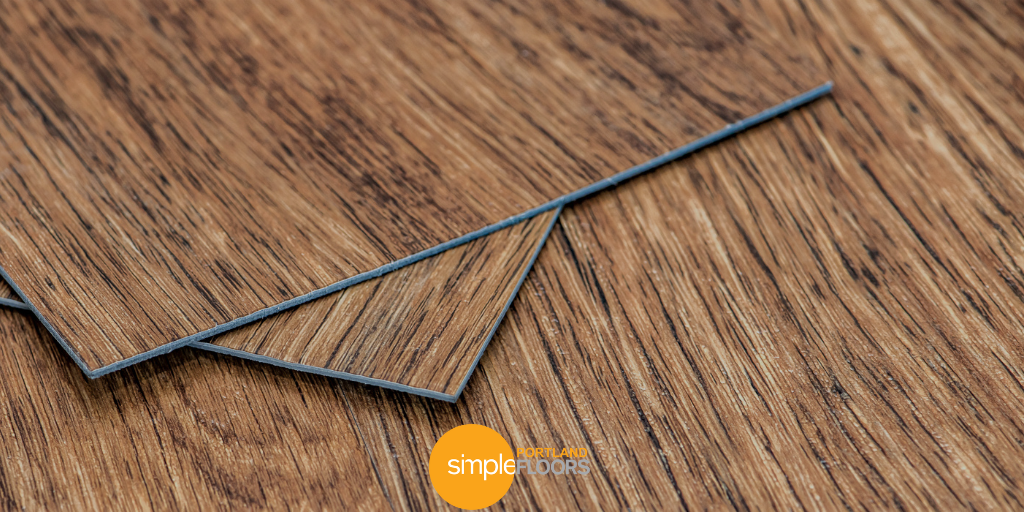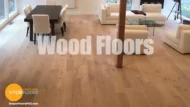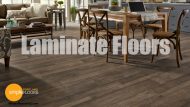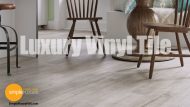Whether your home is new to you or you’ve been in it a while and are ready to make some upgrades, there are always some surprises. And you learn what they are when you start pulling away from the old to get to the new. And rarely is it the good kind of surprise.
Many older homes have settled, leaving the flooring uneven. Or they have concrete-based surfaces that are uneven. This can also lead to structural challenges with new flooring options.
But here’s the good news. Once you know what you’re dealing with, a professional installer can work with you and your budget when remodeling your home.
What Are Uneven Floor Surfaces
There are many reasons that a floor’s surface can be uneven. One common reason is water damage that causes warping. Another is that prior owners put subflooring on top of subflooring (on top of subflooring….), which settled or warped over the years.
Worn-out flooring or subflooring can also cause uneven surfaces. And if your home has a basement or other uneven concrete-based surface, it can lead to an uneven floor surface.
Ideally, you would want to remove all the old flooring and subflooring and have everything leveled with a brand-new subflooring surface. However, not every renovation budget supports this. And some surfaces are more complicated as they could have been caused by the structure below.
Top Pick: Choose a Floating Floor Surface
The best flooring for uneven surfaces is one that is easily installed without using glue, tacks, staples or nails. Floors that float over the sub-flooring are the most flexible flooring because they can be snapped together and put in place, and you have a lot of options.
The Best Floating Floor Options
For most homes, you have three main choices for floating floors-luxury vinyl tile, luxury vinyl plank, and engineered hardwood flooring. You could also choose carpeting which is more forgiving than other flooring. But it needs to be tacked in place, and you would notice the uneven floors as you walk across.
Luxury Vinyl Tiles
Luxury vinyl tiles hold firmly together and look like regular tile. You can get a variety of patterns and colors to match whatever your heart desires.
LVT can be used in any area of the home where you want the look of the tile. They’re light and can be placed just like tile. They can even have grout put in. Or you can snap together the tiles to create what appears to be an intricate pattern when it’s all just part of the same LVT.
Luxury vinyl tile is nothing like vinyl flooring, and is very affordable. And it’s a great option for flooring for uneven surfaces in bathrooms where you want the look of tile.
 Luxury Vinyl Planks
Luxury Vinyl Planks
Probably the most well-known option in floating floors is luxury vinyl planks. The original snap-together laminate flooring planks were invented in Sweden by Pergo in 1977. Laminate floors are made using a layered, synthetic composite construction of four main materials.
Since then, luxury vinyl planks have undergone a lot of improvement. There are now 6-8 layers to provide a longer-lasting floor. Some higher-end LVP have a UV protective layer, and others have added in an antimicrobial layer.
LVP has the look of hardwood flooring as well as distressed wood. You can have the look of planks or parquet at an affordable price. And it floats over uneven flat surfaces.
Engineered Hardwood
One of the hottest floating floor options is engineered hardwood. It’s popular because the engineered wood flooring is made with a top layer of real hardwood. This hardwood is better for the environment because the construction uses thinner pieces using fewer trees.
Engineered hardwood is a great option for uneven floors because you have the appearance and characteristics of solid wood flooring, without needing to be fixed to the subfloor surface.
Choosing A Floating Floor
First, spend some time planning how the floor will be used. Is it high traffic or low traffic? Will there be a chance it could get wet?
If you are looking at patterns, you may wish to draw out the area and the direction you want the flooring to go in.
Then you will want to decide if you want to install the flooring yourself or if you want a professional to do it for you.
Floor Manufacturer Differences
There are hundreds of manufacturers of floating floors. And, of course, each has their own method of connecting one piece to the next. And while the flooring does float, there will be some subfloor preparation requirements. And each manufacturer has their own.
If the flooring is in a moist area like a bathroom or a basement, some manufacturers will recommend a vapor barrier to protect the bottom of the laminate flooring. And, some floor installation eperts recommend an underlayment that provides a soft buffer between the flooring and the sub-flooring.
Installing a floating floor can be relatively easy, though, as most simply click or snap together. It’s important that it is assembled correctly so that it remains water-resistant and holds its shape. And engineered wood floating floors that usually require a bead of glue at the joints to reinforce the connection.
The other great thing about floating floors? Once it is set up, you can walk on it immediately. You don’t have to wait for off-gassing or any glue to dry.








